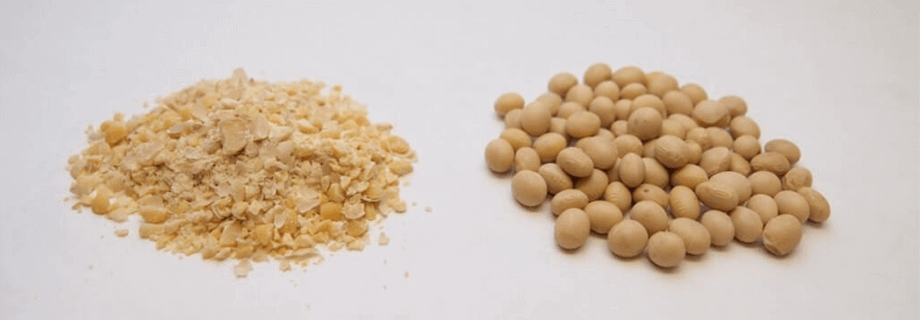All Energy Sources Are Not Created Equal

Energy is supplied in the diet to livestock usually by starch in cereal grains, such as corn, and by animal fats and vegetable oils, such as choice white grease or soybean oil, respectively (note: fat and oil are terms that may be used interchangeably when discussing the supply of energy in the diet). I recently blogged about why this is important and challenging, and how extrusion liberates more energy from the same unit mass of a dietary ingredient.
Some data from a recent article helps to drive home this point. Researchers at University of Illinois performed an extensive digestibility experiment in pigs to determine how different sources of dietary energy (oils) are utilized. Ileal digestibility experiments are especially useful for this purpose due to ease of interpretation – what gets fed in the diet versus what remains at the end of the small intestine – fat and oil digestion is essentially complete at this point, and the large intestine, which follows the small intestine, contains microbes that modify anything remaining, which distorts measurements of energy usage by the animal. So, without getting more involved for our purposes here, less fat remaining at the end of the small intestine means that more energy (supplied here as either corn or soybean oils) was absorbed and available for use by the pig for growth, maintenance, and health.
The ingredients were used to supply corn oil or soybean oil, and consisted of the following:
- Corn germ – embryo of the seed
- High oil corn – variety of corn with higher-than-typical oil content
- Distillers dried grains with solubles – by-product of corn ethanol industry
- High protein distillers dried grains – by-product of corn ethanol industry processed to retain more protein than normal
- Extruded full-fat soybeans – soybeans processed through a high-shear extruder
- Free corn oil – fully extracted and refined oil from corn
Note that all of the ingredients except free corn oil are intact energy sources – neither extracted nor refined, and contain other nutrients, such as protein.
Looking at this data I took from the article, it becomes clear why performing digestibility experiments is incredibly valuable:
At least with the ingredients in question here, total fat content of the diet is somewhat meaningless in terms of predicting ability to supply energy (I included the data on fat remaining in the feces, which takes into account the effect of the large intestine, just to illustrate that fat digestion is essentially complete by the end of the small intestine) – there is no trend in the data between amount of fat in the diet and the amount of fat remaining in the intestine.
When looking at this same data on a digestible basis, a clear picture emerges:
Big differences exist between the energy sources. Fully-extracted and refined corn oil – free of most other components in corn – is highly digestible and thus, very little of this dietary fat remains at the end of the small intestine. Among the intact sources, extruded full-fat soybeans had the least amount of dietary fat remaining once digestion was complete. In addition, the intact sources of energy, especially full-fat soy, supply other essential nutrients as well, such as protein.
Finally, the authors calculated digestibility values, which will be used for diet formulation:
I’ve blogged before about extruded soybean ingredients and how they can be used successfully in swine diets, and the data in this study further explains why this is true.
Extruded full-fat soybeans are a high-quality source of energy, protein, and other nutrients due to the following:
- High-temperature, short-time extrusion liberates nutrients by rupturing cell walls, while retaining quality (nutrients are not abused by the process)
- Antinutritional factors are deactivated, creating a usable source of many nutrients
- Mixing during extrusion produces a uniform product
- Stability is achieved by reducing moisture and freeing naturally-occurring, stabilizing antioxidants
In conclusion, it could be said that soybean extrusion alone (through an Insta-Pro high-shear extruder) pushes the quality of soybean oil energy toward free corn oil, which is extensively processed and refined. And, as other products are further stripped of energy (take the recent trend for corn oil extraction from distillers dried grains), extruded full-fat soybeans offer livestock producers a high-quality source of energy and protein.





